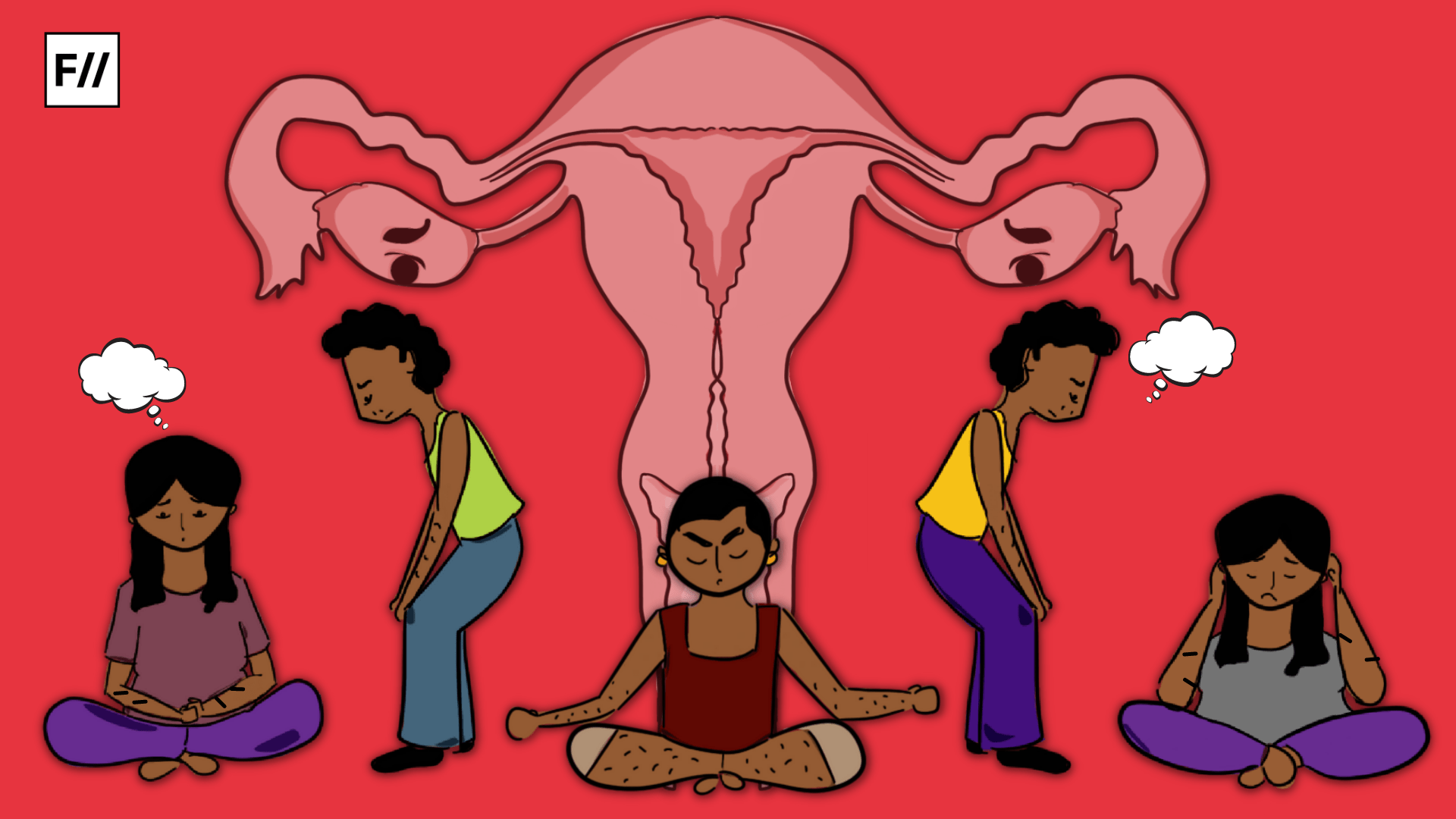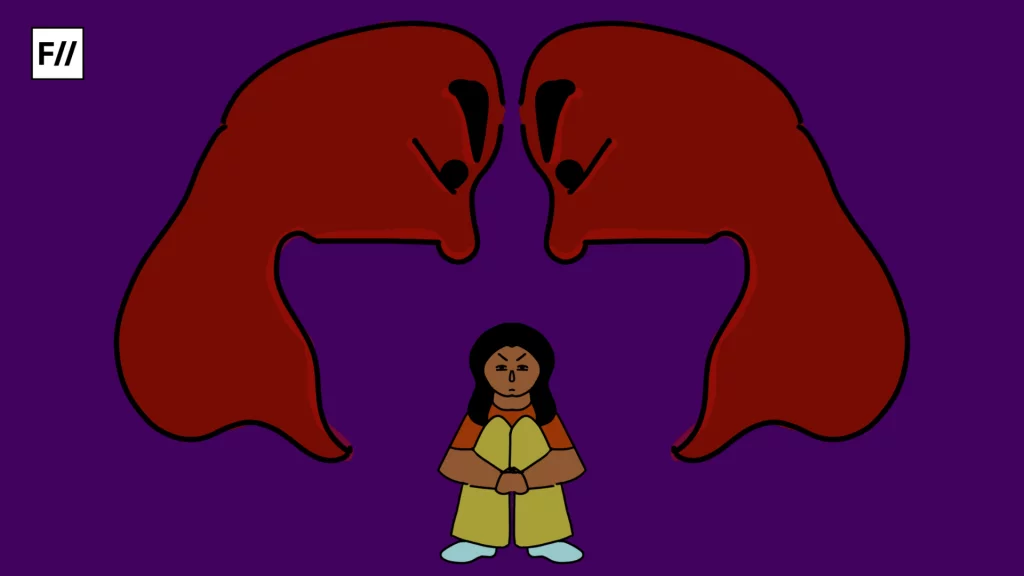Dysmenorrhea is the medical term which is used to refer to painful menstruation, usually associated with uterine contractions. Most women experience menstrual cramps, but the intensity, as well as the symptoms, differ for all.
There are two types of dysmenorrhea: Primary and secondary. Primary dysmenorrhea is the cramping pain that occurs before or during periods, caused by a chemical called prostaglandin in the lining of the uterus. Prostaglandins make the uterine muscles and blood vessels contract and are highest during the initial days of the period. With the progressive shedding of the lining of the uterus during menstruation, the levels of prostaglandin go down.

Secondary dysmenorrhea is the outcome of a disorder or infection in the uterus or reproductive organs. Conditions that can cause secondary dysmenorrhea include endometriosis, uterine myoma/fibroids, adenomyosis and other contingent factors.
Endometriosis happens when a tissue similar to the lining of the uterus grows in other parts of the reproductive organ, like the ovary, fallopian tube, behind the uterus, or the bladder. This bleeding can cause enormous pain around the time of periods and create other health and fertility issues.
Not being able to bear the pain or seeking out medical remedies is equated with a lack of pain tolerance and construed as a sign of weakness. Painful periods are also dismissed with generalisations like ‘women in our family have had bad periods’ or ‘when we were your age, we had the same but we bore the pain anyway’ or ‘it will reduce with age‘
Uterine myoma/fibroids are non-cancerous growths that can develop during one’s childbearing years. It can cause heavy blood flow and anemia if left untreated. The risk factors include a family history of fibroids, obesity, or early onset of periods.
Adenomyosis is a condition in which the endometrium (lining if the uterus) exists and grows into the uterine wall. It mostly occurs post childbearing years and typically disappears after menopause. It can cause heavy or prolonged periods, pain during sexual intercourse, or clots while menstruating.
Other factors like inflammations or narrowing of the cervix also leads to pain during menstruation. People with a uterus can be affected by medical conditions related to the reproductive organs or some other health impediments that might occur during menstruation which can be the cause of dysmenorrhea.
Also read: Dysmenorrhea Is Not The Same As Period Cramps, Here’s Why

Research on dysmenorrhea has reflected the variety of symptoms and age factors affecting, it among uterus bearing individuals. As the usual belief suggests that the symptoms reduce with age, it has been quite the opposite. Some even believe that they have secondary dysmenorrhea because the symptoms match, but they have not been clinically tested.
Studies also show that dysmenorrhea acts negatively in women’s lives and is the leading cause of absence from school and work in the reproductive age. It also leads to other chronic issues and may be the root of other painful conditions in some.
Keeping the biology apart, a very important barrier that must be addressed is how most people with uterus suffer from menstrual issues yet refuse to get themselves clinically tested due to ignorance and social stigmatisation. Period pain is often generalised as a part of the ‘monthly thing’.
The relevant issue here is about how uterus owners are denied control of their body. Pain tolerance, menstrual distress, and discomfort manifest differently in different individuals, and it is up to each person to choose how to handle it. Menstruation is not a uniform experience. We must stop normalising pain and trying to trivialise how it affects menstruators
Menstruators are conditioned with the idea that they must be strong to handle the unbearable and nerve-wracking cramps which are part of life. Young girls are forcefully asked to be accustomed to the pain and are given over the counter pain killers to temporarily curb the pain.
Not being able to bear the pain or seeking out medical remedies is equated with a lack of pain tolerance and construed as a sign of weakness. Painful periods are also dismissed with generalisations like ‘women in our family have had bad periods’ or ‘when we were your age, we had the same but we bore the pain anyway’ or ‘it will reduce with age‘.

The relevant issue here is about how uterus owners are denied control of their body. Pain tolerance, menstrual distress, and discomfort manifest differently in different individuals, and it is up to each person to choose how to handle it. Menstruation is not a uniform experience. We must stop normalising pain and trying to trivialise how it affects menstruators.
Period pain is debilitating for many menstruators and dysmenorrhea remains under-investigated due to social stigma and ignorance. We must address menstrual pain medically and ensure that every menstruator is aware of the causes of their pain and has the autonomy to deal with it the way they wish to.
Also read: I Am Done Apologising For Suffering From Dysmenorrhea
Featured Image: Ritika Banerjee for Feminism In India
About the author(s)
Sonal specializes in social and political writing and considers it to be her strongest skill. She is an undergrad media student who never fails to voice her opinion on matters and isn't afraid to express her heart. She has worked as a social media manager and a content writer. Sonal enjoys running, reading, and dancing, all as an amateur but by grace





Well articulated